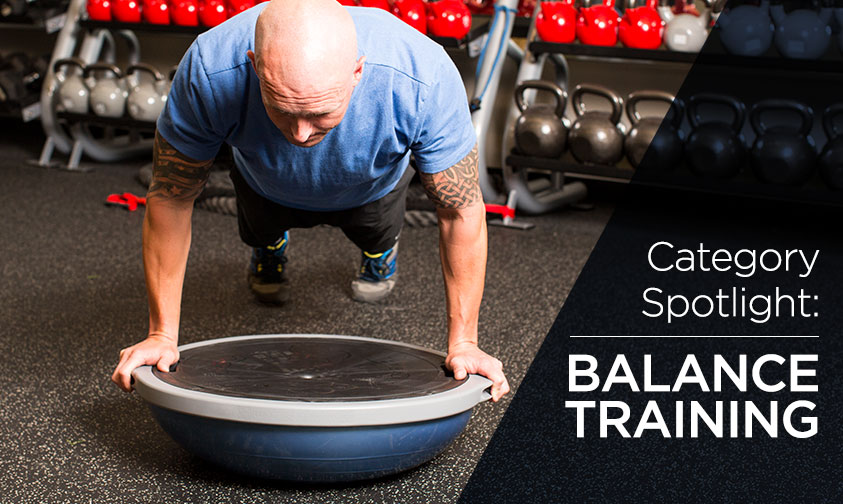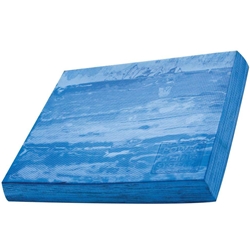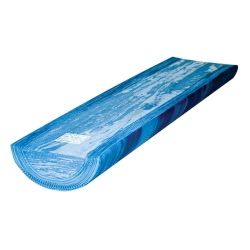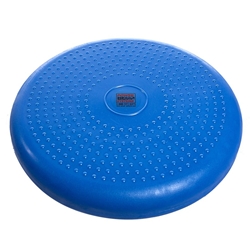When you sign up for a “fitness test” there are several areas in which you might expect to be evaluated. Most would anticipate tests to evaluate cardiovascular endurance, muscular strength, and flexibility. However, your ability (or inability) to balance is worth considering not only when beginning an exercise program but also throughout your lifetime.
According to Outdoor Adult Fitness Parks: Best Practices for Promoting Community Health by Increasing Physical Activity, “Balance is one of the most overlooked areas of a well rounded workout, but is critical for complete fitness. It becomes even more important as we age, as good balance can help prevent inadvertent falls.”
Our balance is tested in daily activities from walking up the stairs with groceries to abruptly changing speed or direction.
Why should I integrate balance training into my program?
The effectiveness of balance training has been evaluated in the health and fitness industry in groups of all fitness levels from athletes to the elderly. Research has shown that after just two sessions of balance training one can experience changes in the brain that lead to improvements in sensory motor coordination and connectivity.1 Improvements in the brain-body connection can lead to quicker reaction times in unstable environments which is a benefit to any age and fitness level. Another side effect of balance training is an increase in strength of smaller, stabilizing musculature of the joints and core. You may also experience an increase in stability and strength of tendons and ligaments which, over time, can reduce the incidence of injury.
How do I get started?
Often your balance is challenged in many core exercises that you might already be familiar with such as a stability ball crunch or a single leg squat. However, you can integrate balance training throughout your workout with the addition of balance training tools. Power Systems offers a variety of balance training tools that allow for progression of difficulty as your stabilization ability improves over time.
The VersaBalance Pad is a great tool to start with as its thick foam construction provides a proprioceptive challenge to double leg and single leg exercises. Begin performing body weight exercises at first and then add resistance in the form of free weights or tubing as you progress. You can also simply slip off your shoes to perform a single leg balance to increase ankle stability.
The VersaBalance Log is a versatile piece that allows you to train with two levels of instability. Use with the flat side down to add a bit of instability to push-ups. Challenge your balance with the flat side up in a single leg balance during warm up or try a split squat with one foot on the balance log and one foot on the floor. You may also use two VersaBalance Logs side-by-side for two-legged balance training.
Another tool that allows for two levels of difficulty is the VersaBalance Board. It comes with a blue adapter base that allows for greater stability when in place. When you are ready to progress, simply remove the base and decrease the surface area of contact for a greater challenge.
The VersaDisc is great for moderate to advanced level exercises. The raised nodules on the bottom of the disc are great for rehab or massage on a shoeless foot but also provide a non-slip surface during exercise. You can add stability by widening your base of support with two VersaDiscs (one for each hand or foot.)
At first glance the CorDisc and the VersaDisc look very similar. However, the CorDisc is 24 inches in diameter making it nearly double the size of its counterpart. This allows the user to stand with both feet shoulder width apart while performing exercises. It also provides a wider base of support for other core exercises such crunches or planks. The CorDisc is lightweight and easy to transport to, from, and around the gym to add a level of difficulty to any standing, seated, or kneeling exercise.
The BOSU Pro Balance Trainer is the largest and perhaps most dynamic tool that we offer in this category. You might have already seen it in use around the gym or in group fitness classes. BOSU stands for Both Sides Up. The blue dome side offers the main training surface for core and lower body balance training. Protect your lower back while adding a level of balance difficulty by performing traditional balance exercises (i.e. crunches, sit ups) on the BOSU. It is NOT recommended that you stand on the BOSU with the flat side up; however you can add instability to upper body exercises such as push-ups and planks with the gray side up.
Balance training can benefit any and all ages and fitness levels. Choose the balance tool that works best for you and enjoy the benefits of adding stability training to your routine.
References:
- “Balance and the Brain”. The Training Edge, Nov/Dec 2014. National Academy of Sports Medicine.







You must be logged in to post a comment.